Sudden space Yekaterinburg
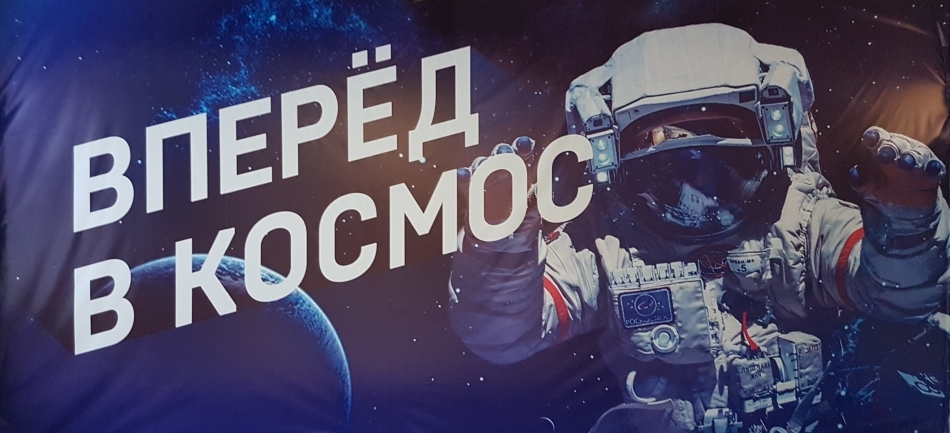
It is good that new, albeit temporary, non-fiction exhibitions are opening in Russia. At the very end of November, my acquaintances from the Moscow Museum of Cosmonautics contacted me and asked if I would not like to go to Ekaterinburg to the exhibition “Forward to Space!” The same week and give a couple of lectures there. Naturally, I agreed. I bring to your attention a report from the exhibition and a report on visits to space and not-so-museums.
The exhibition "Forward to space!"
The exhibition “Forward to Space!” Is located on the first floor of the printing house of the publishing house “Ural Worker”. The industrial past gives a trendy loft atmosphere with ceiling beams, unfinished floor, uncluttered white walls and protruding fire hydrants.
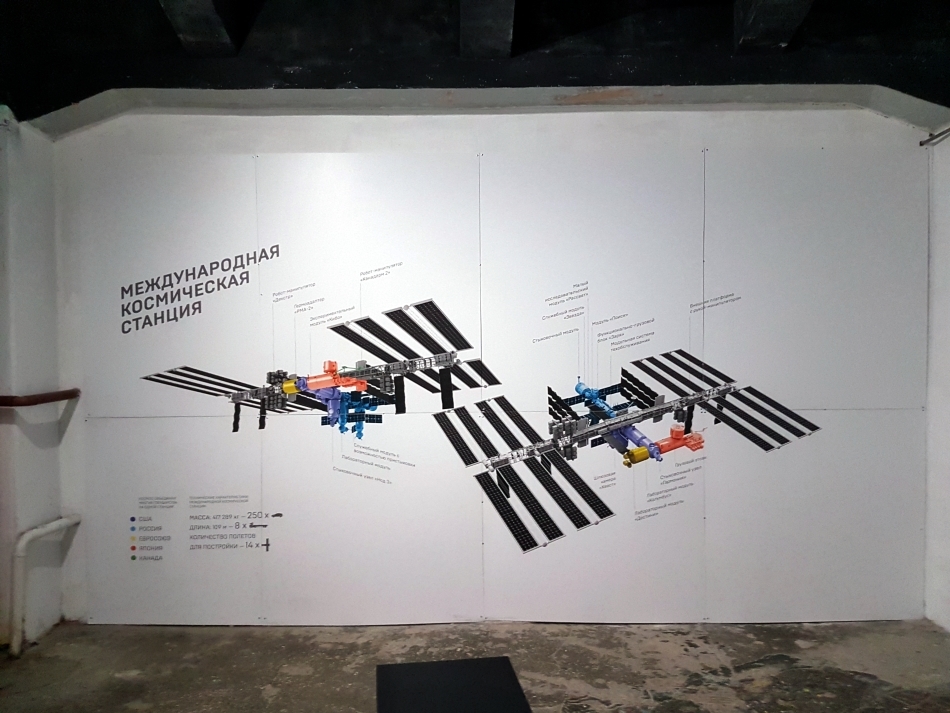
')
The history of manned cosmonautics is presented in great detail; a full-width wall can be studied for a long time.

Teflon, thermal underwear, polyurethane foam with shape memory or, for example, a tool with batteries could have been thought out without cosmonautics, but their way to each house would have been longer and more tortuous.
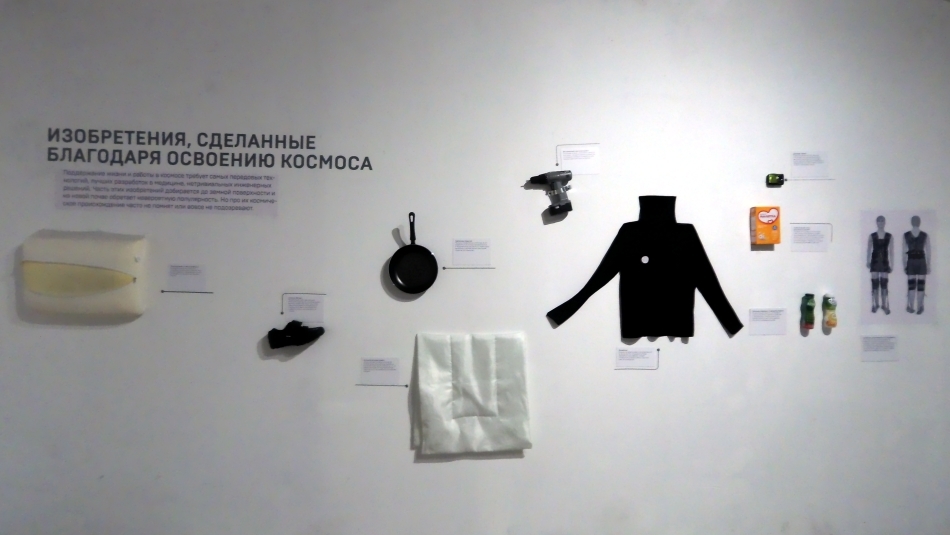
Space - this, including, and beautiful photos. When they are in good quality, they can be printed on the entire wall. It turns out nice.
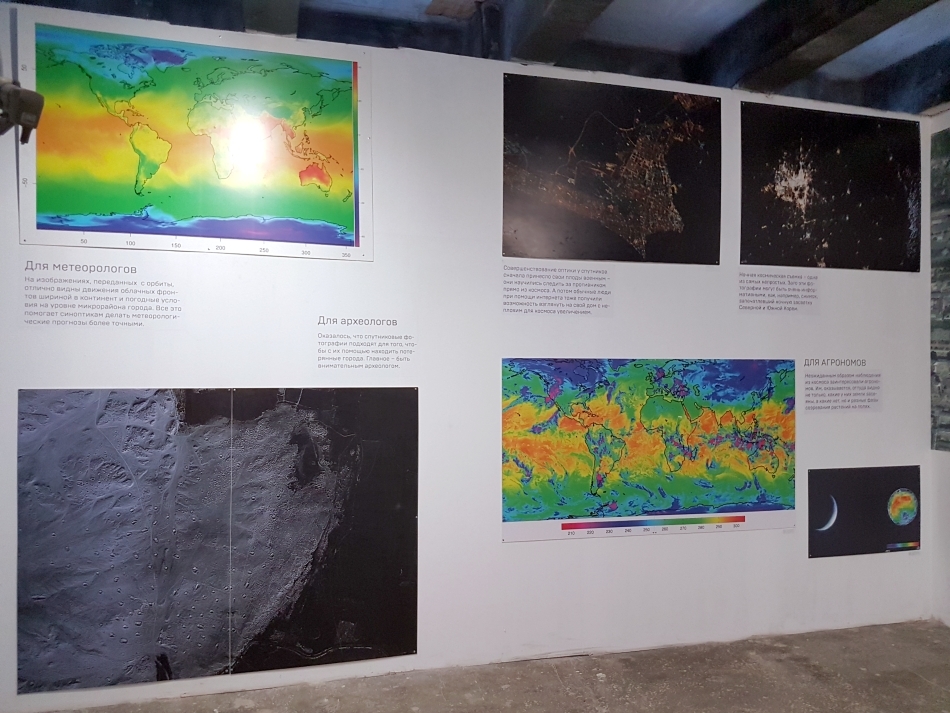
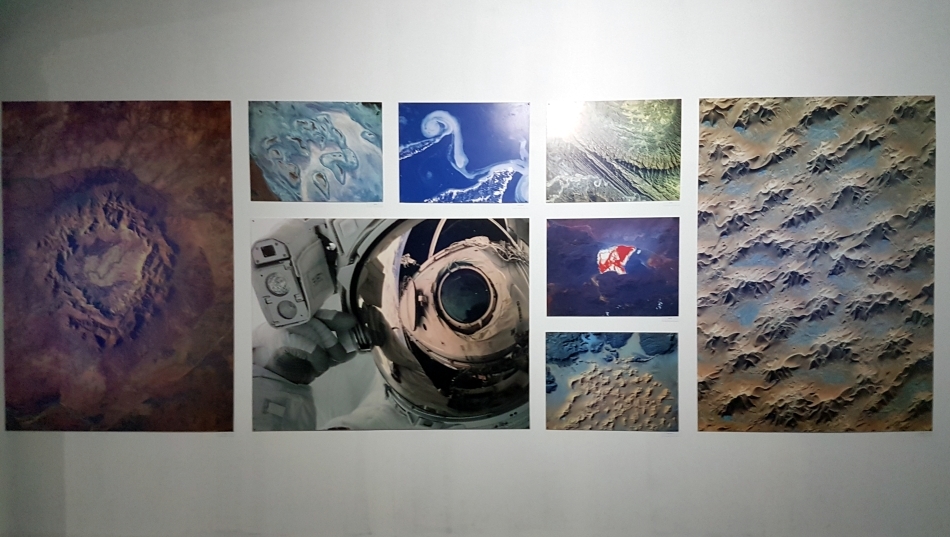
The strangest exhibit in the exhibition is a room illustrating the work of satellite television.
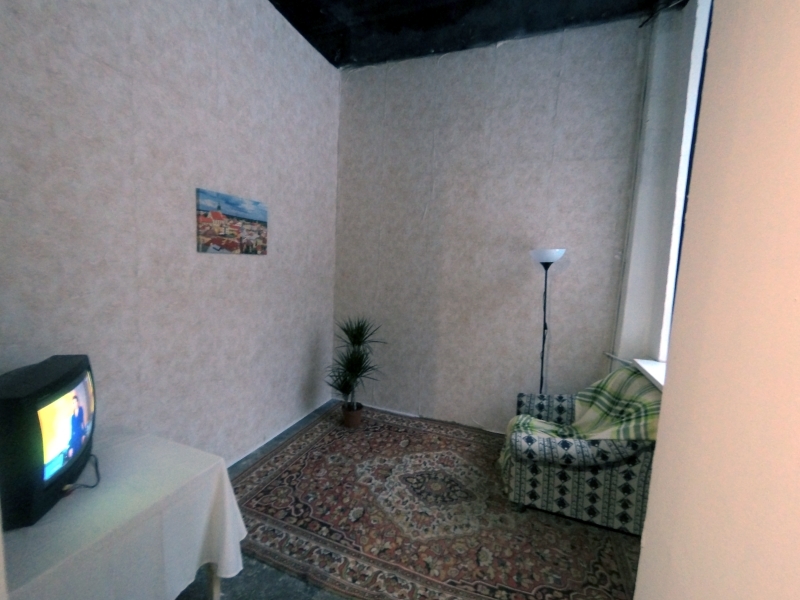
Space holiday artifacts and space food. The guide says that not so long ago a visitor dropped one bank and crushed it. There was no point in putting it back, and the staff gathered in a festive atmosphere to try real space food. There was little salt in it, and most of all, he said, it looked like cat food. If you suddenly do not know, nobody has been eating from tubes in orbit for forty years, and space food, apart from the efforts spent on quality assurance and security guarantees, is not particularly different from the terrestrial one. And in personal transmissions from relatives, quite ordinary terrestrial food can come, which is in a standard store.
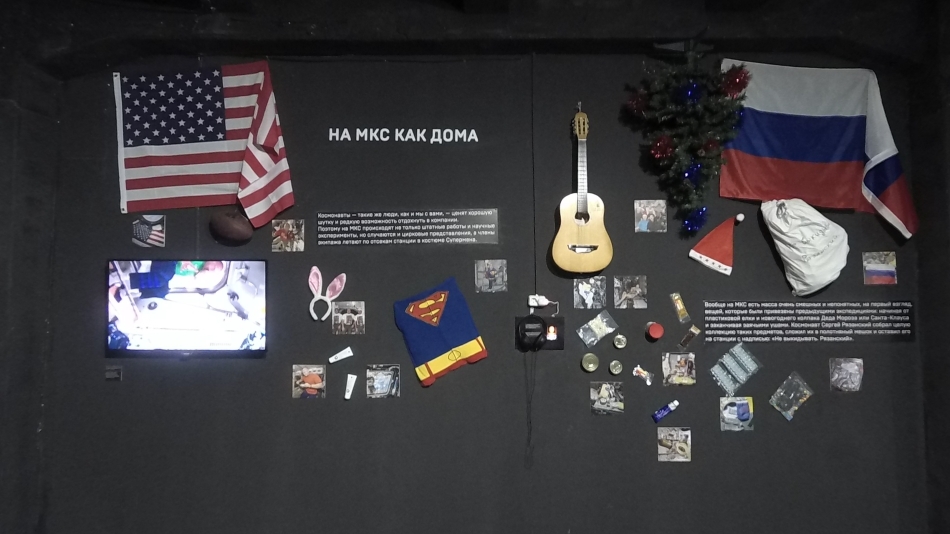
There is a lot of multimedia at the exhibition - audio, video, there are even a few pairs of virtual reality glasses.
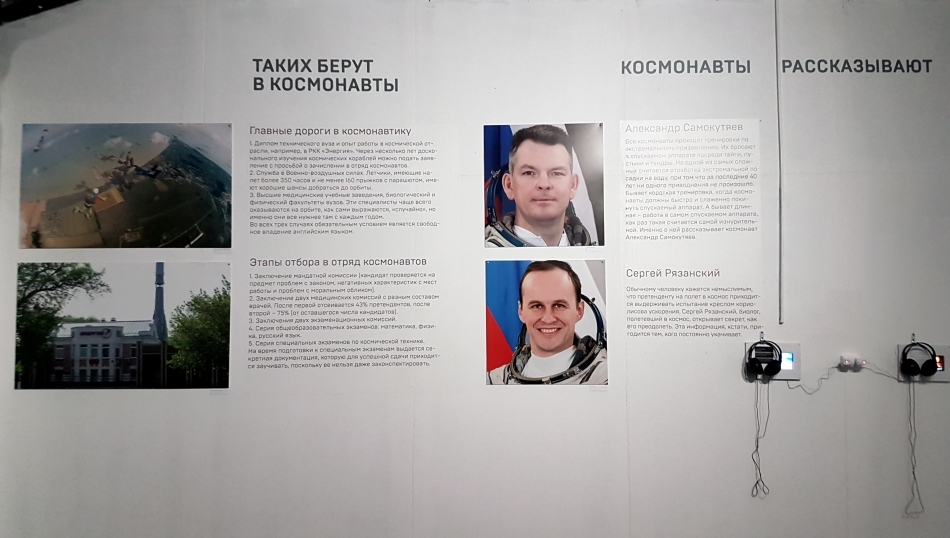
From a nearby museum, the NPO Avtomatika (in more detail about it later) brought an incomprehensible unit.

Most of all it looks like a descent vehicle of a reconnaissance satellite or a geophysical rocket, but according to the news , this is a large-scale model of the descent vehicle of the Vostok spacecraft with a container in which Belka and Strelka flew. The layout is made very high quality, the heat protection rings are the same as the real “East”, the colors are very plausible, and if you look completely at rest, you can see the thermal damage to the skin.
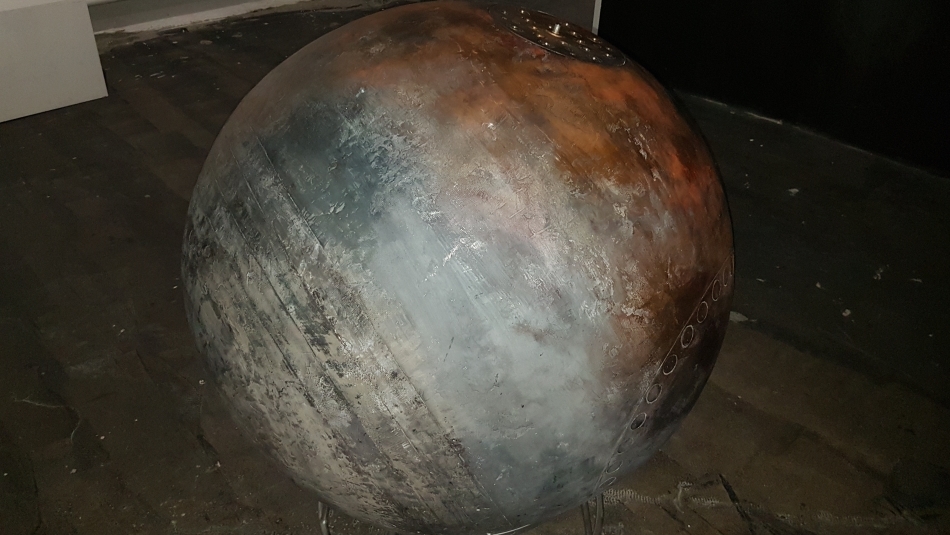
The private space section shows Rocket Lab with an Electron rocket (the first launch soon), Copenhagen Suborbitals (they smashed one rocket this summer, they are making the next one) and, suddenly, the Luna seven project from the domestic company Lin Industrial (in the summer they tested the system management for your ultralight booster project).

The suit "Falcon", which is used on the "Union". At the Sea of Clarity festival I had the opportunity to look at it closely and touch it, and in the construction of this spacesuit I was most struck by engineering audacity and ingenuity. In "Falcon" fit through the connector on the chest, but for its sealing do not use some kind of super-technology with micron tolerances. On the contrary, a sleeve through which one fits into a spacesuit is collected into the gut, over-tightened with an ordinary elastic band, this gut is folded into a roll and fixed on top with a zipper cloth. The tightness will not be absolute, but the loss of air through such a structure is minimal and will be the least problem for astronauts in the event of a ship depressurization.
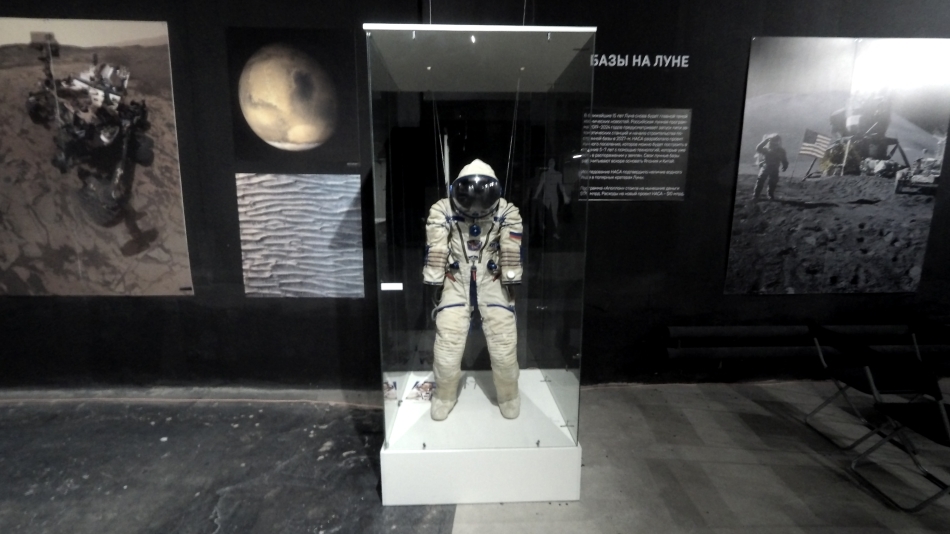
At the checkout box amazing souvenirs - gingerbread with a picture in the glaze. I watched for a long time, but did not dare to take it - it is a pity to eat them, but to keep them without eating them is silly. Let the best in the photo remain.

Summary:
The exhibition will work only until December 20, if possible, I recommend to go. Content quality and interesting.
Space Museum "NPO Avtomatika"
In Yekaterinburg, recently opened a space museum NPO Avtomatika. But he works on weekdays from 10 to 17 and on the second and third Saturday of the month. And I was on the first Saturday of the month, and, even through the organizers of the exhibition “Forward to space!”, I could not get to them. Very disappointing. In general, in my opinion, a museum that does not work in the evening and on weekends is more than an imitation. Fortunately, other people managed to go there, and at least a few photos on the network are available - the news of the discovery and photos from the deputy’s blog .
Planetarium
Also in the center of the city, in the building of the cinema, there is a small planetarium. They do not have any special artifacts or exhibits, but it is good that in principle there is a planetarium.
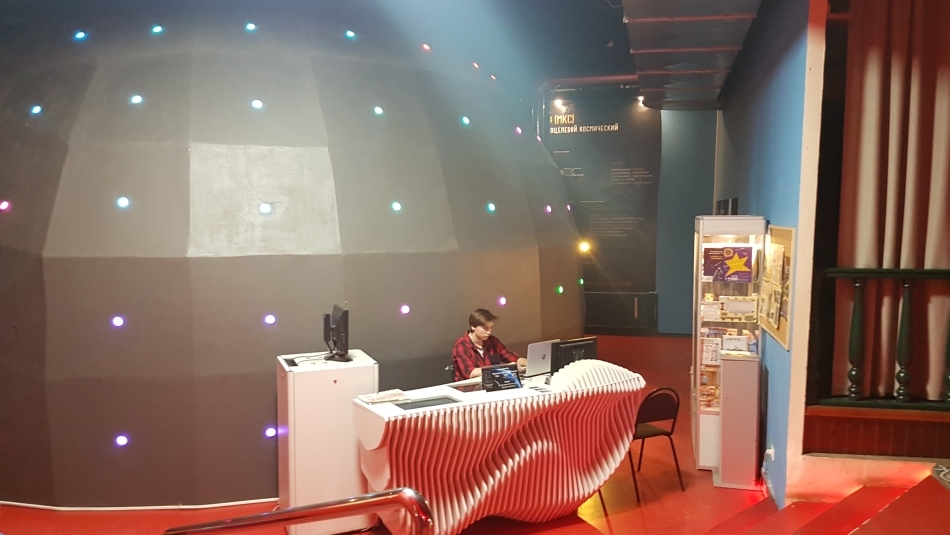
Geological Museum
The Urals are mountains, geology, minerals and gems. So I went to the geological museum. Lucky, there was a temporary exhibition dedicated to meteorites.
The astronauts also visited the geological museum.
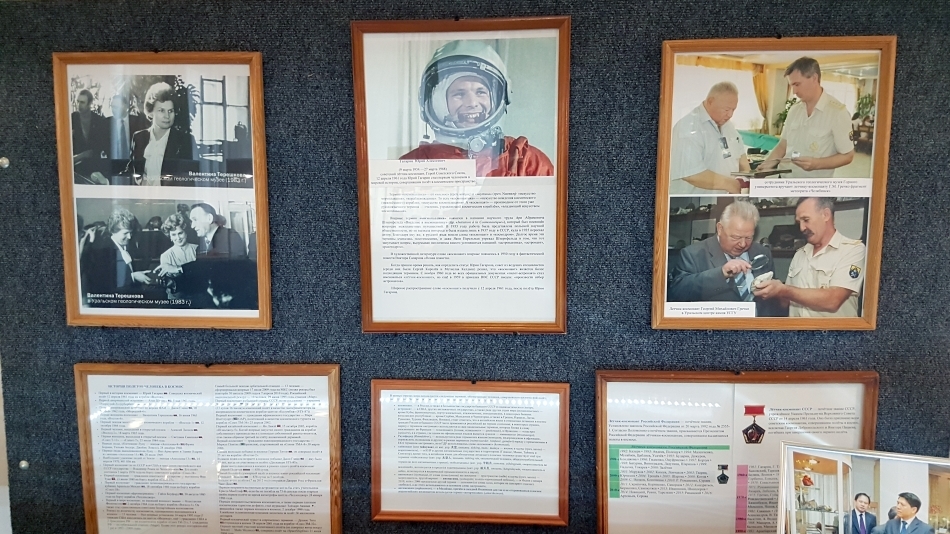
Iron meteorites.
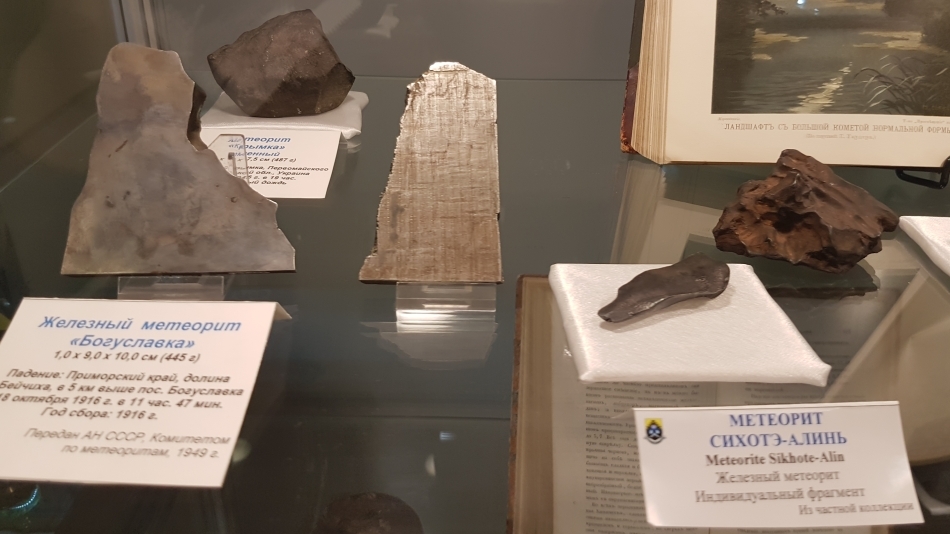
Beautiful internal structure.

Stone meteorites.
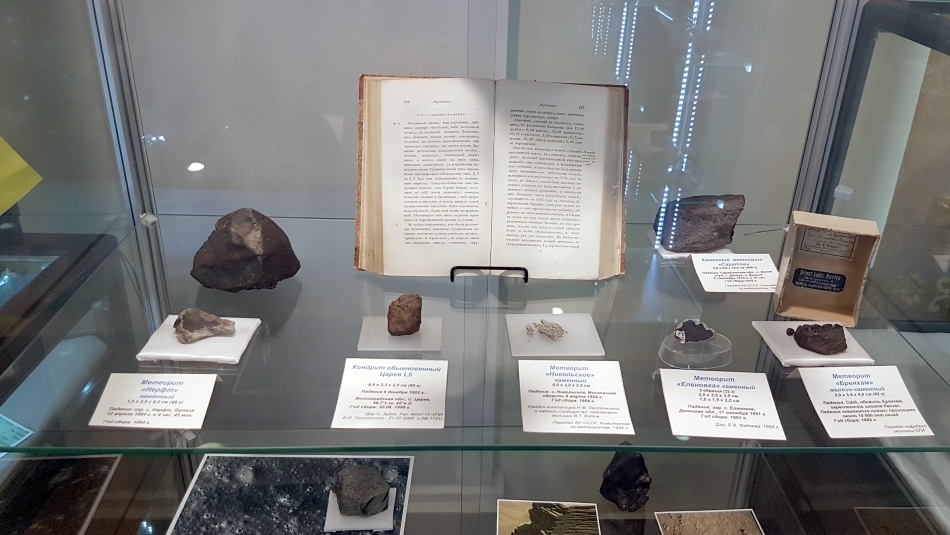
Stand meteorite "Chelyabinsk".

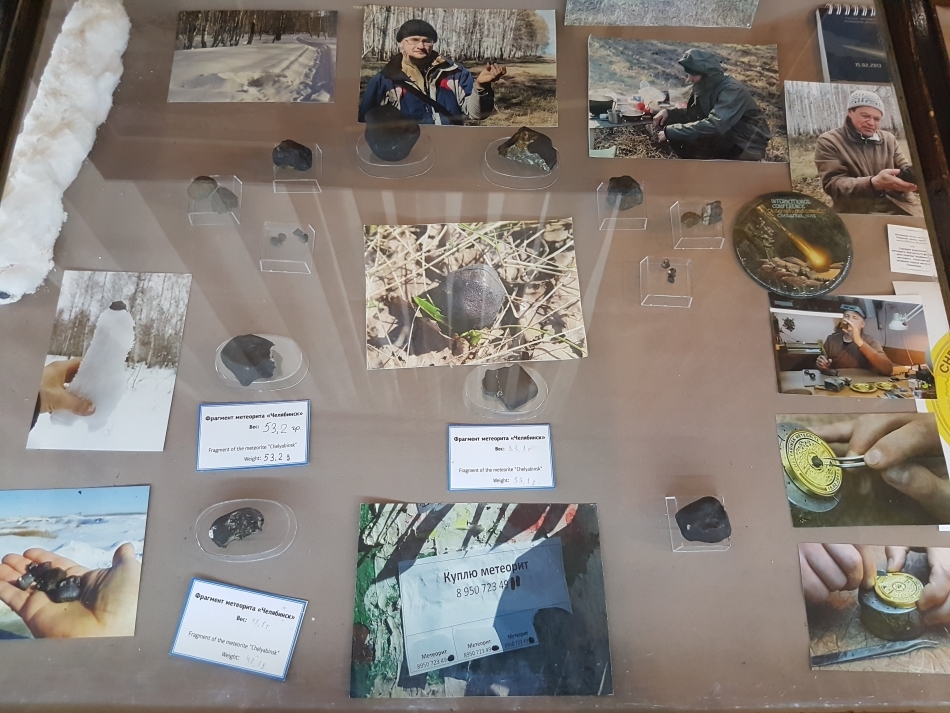
Chelyabinsk meteorite in culture.
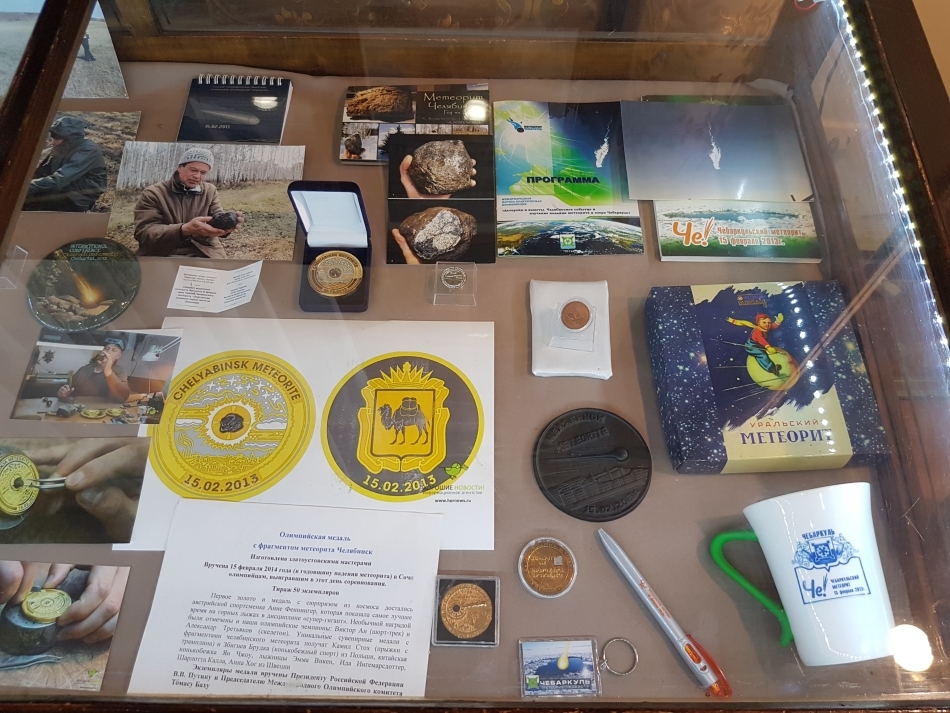
More meteorites.

But this is not a meteorite, but much worse. In fact, it is a shame of the museum and the university, in which the museum is located. Give money to merchants with a site whose name copies the name of Roscosmos, and boast about it. Buy the name of the star is impossible. The International Astronomical Union specifically keeps on its website a refutation of any of its links with organizations that sell the names of stars or land on other celestial bodies. If you want a star or an exoplanet to get the name you came up with - offer them to contests that the International Astronomical Union has recently begun to host. But the chances that the names of “Horns and Hoofs LLC” or “Vasya Pupkin” win are insignificant.
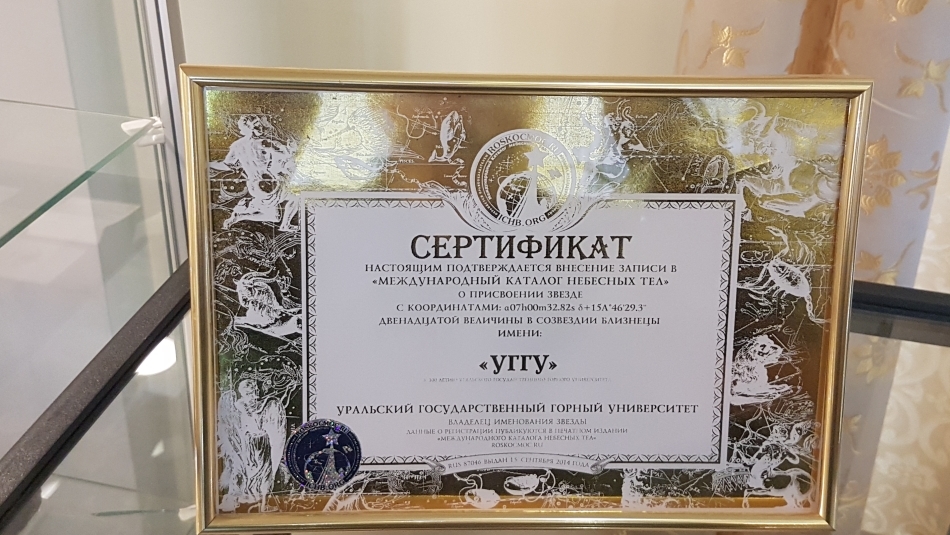
Several non-space photos under the spoiler
There are three floors of such goodness in the museum, come rested and plan to spend at least a couple of hours here.

Some stones can be very beautiful with a microscope.

Topaz, beryl and heliodory
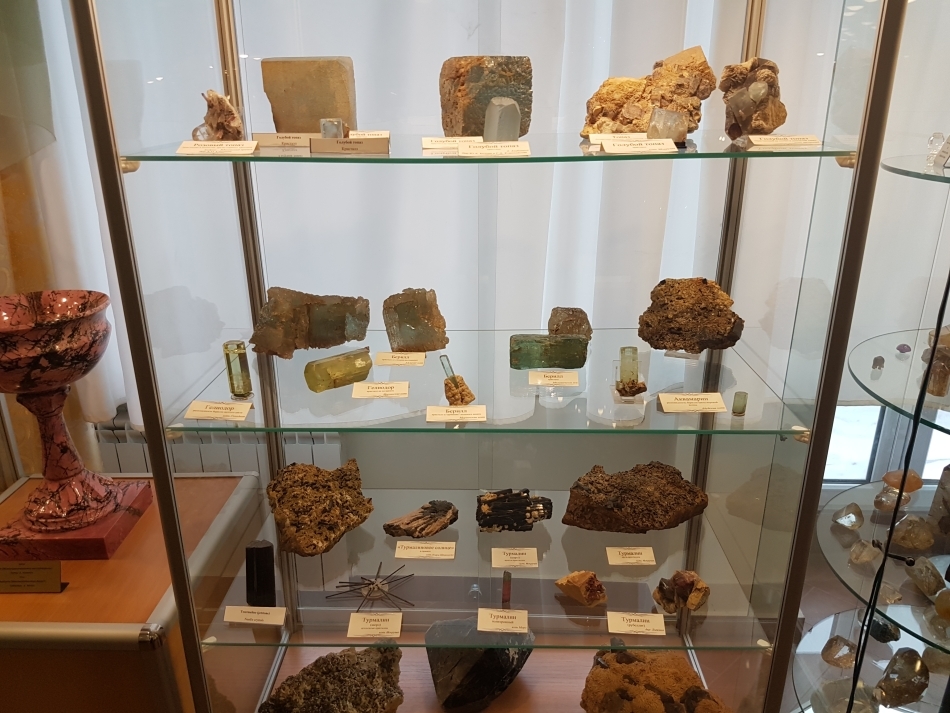
Ural is, of course, malachite.
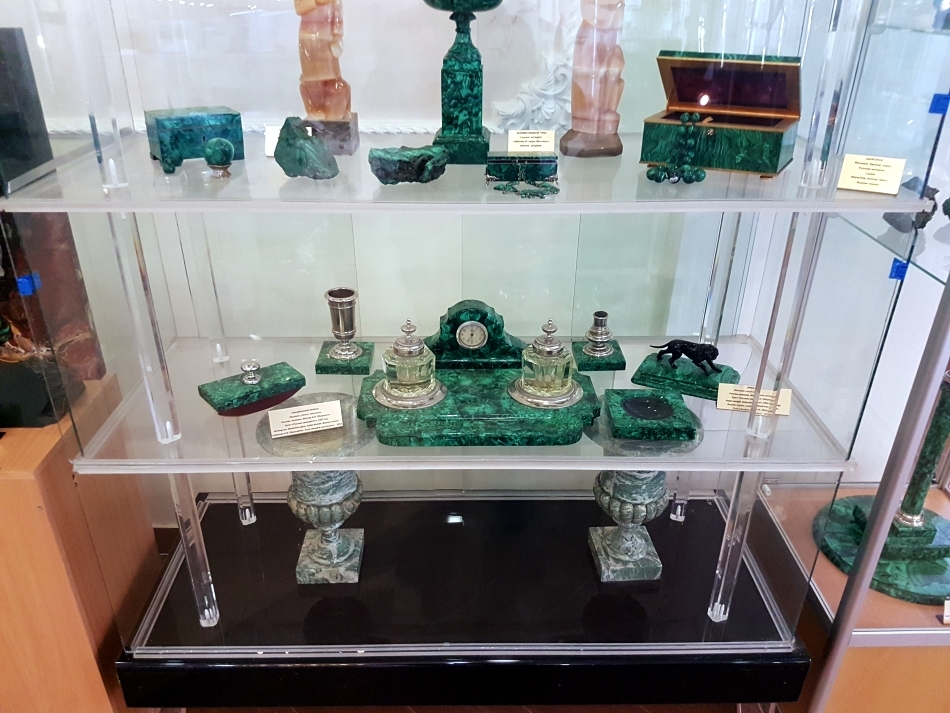
Portrait of Bazhov.

No seals - nowhere
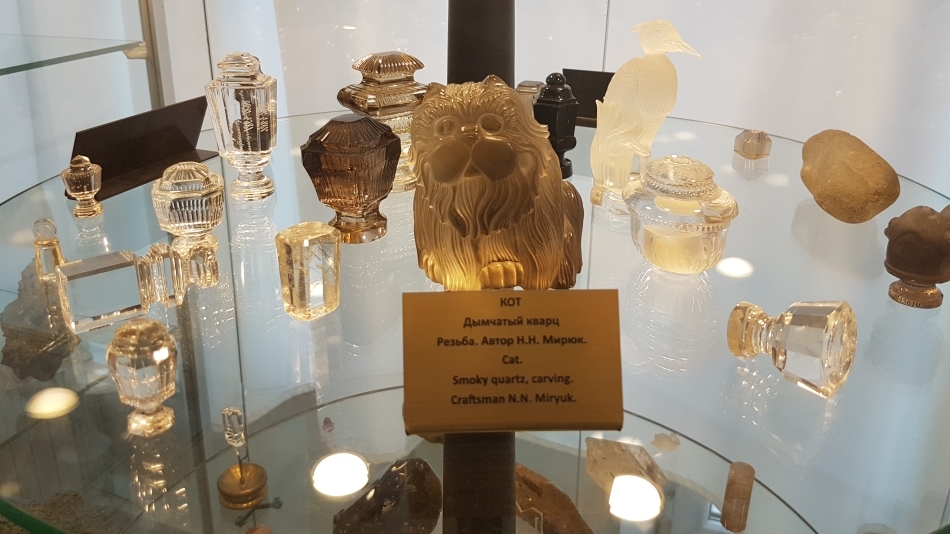
Funny, but some names were familiar thanks to the game in Dwarf Fortress. If I ever have free time again and I can play it again, it will be interesting to remember what lies behind the pseudographics.


Some stones can be very beautiful with a microscope.

Topaz, beryl and heliodory

Ural is, of course, malachite.

Portrait of Bazhov.

No seals - nowhere

Funny, but some names were familiar thanks to the game in Dwarf Fortress. If I ever have free time again and I can play it again, it will be interesting to remember what lies behind the pseudographics.

The Bazhov Museum and the Museum of Science and Technology of the Sverdlovsk Railway do not relate directly to space, therefore, under the spoiler
After the geological museum, it was logical to go to someone who wrote very distinctively about gems, and the lives of the people who mined them. The Bazhov Museum is a small house in which he lived.
In the first room there is an excellent multimedia directory (left).
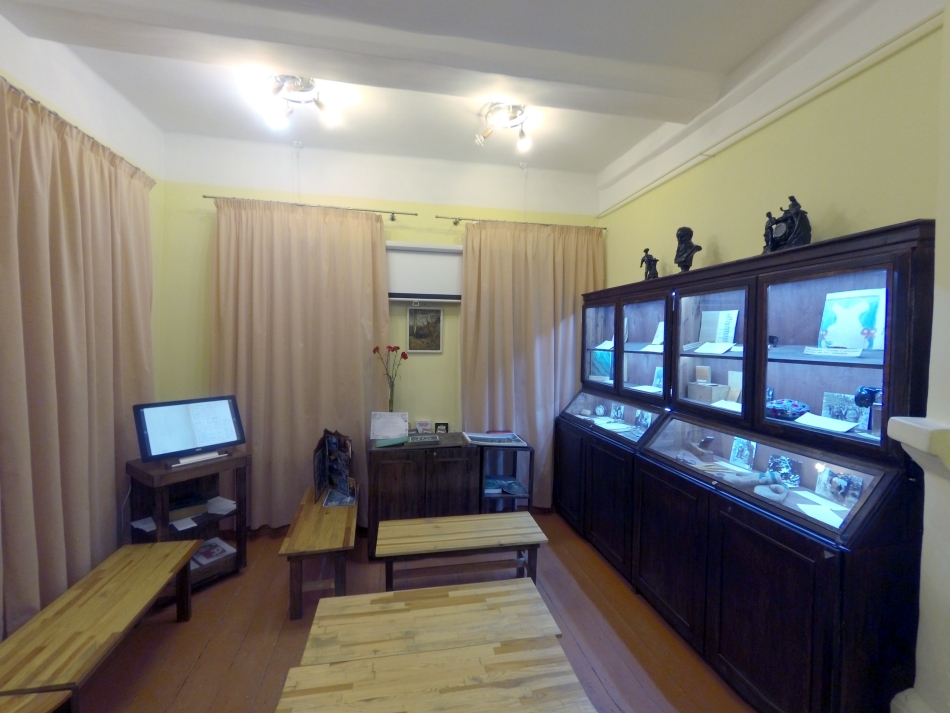
Personal items and gifts.

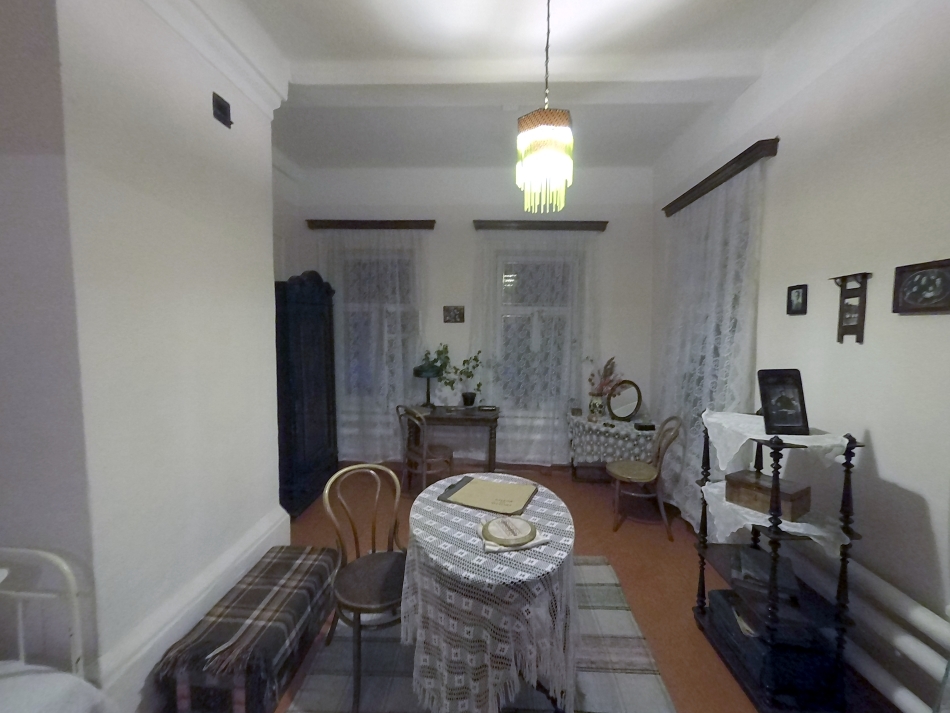
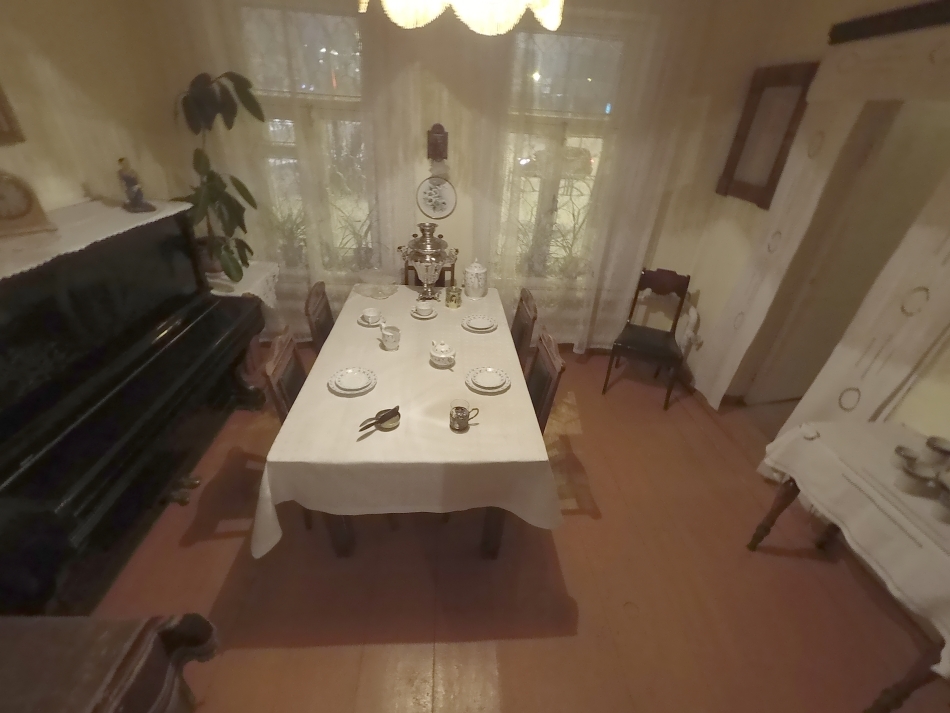
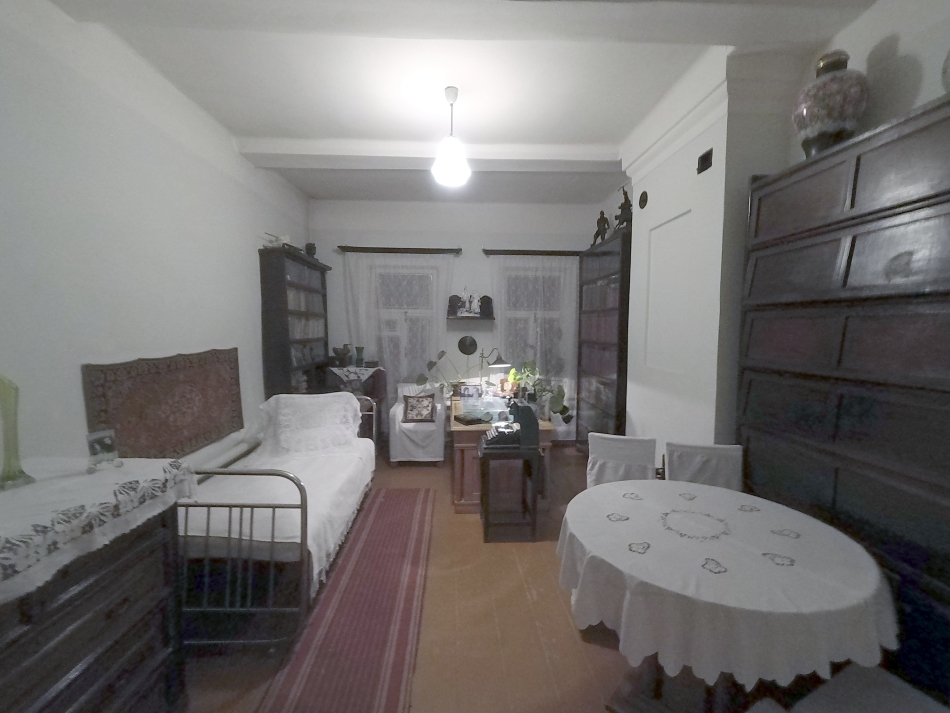
Located near the station, in front of him sculptural compositions.

Layout of the boiler locomotive "FD" in 1939.
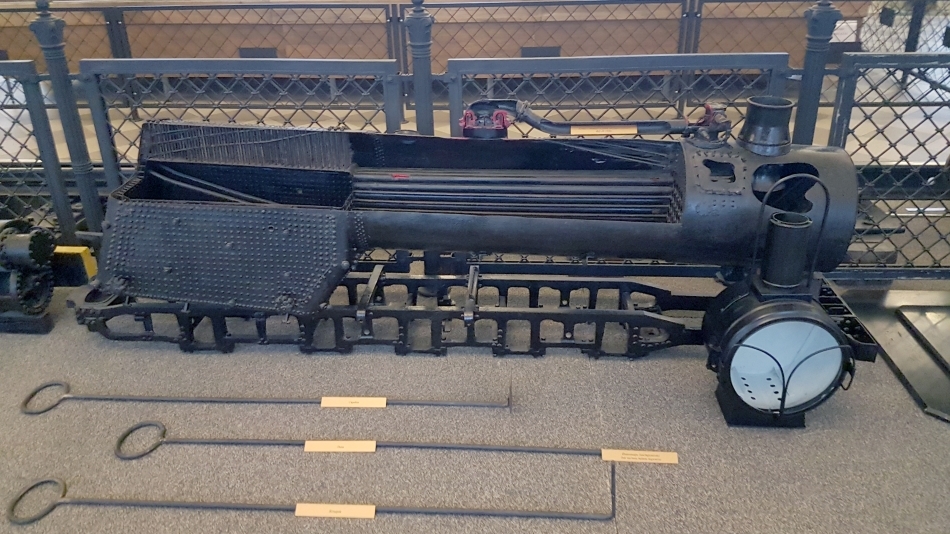
Railway bike.

Below is a mechanical computer for calculating the magnitude of the shifts when straightening rail lines on curves. Top special abacus to determine the deflection of the rail.
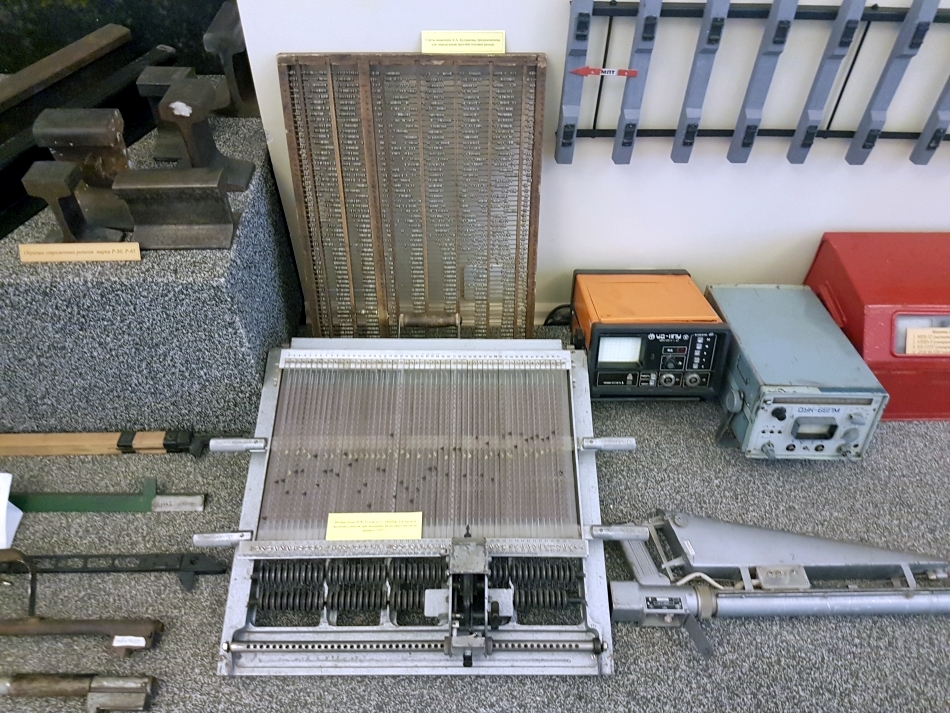
The control panel of the locomotive VL-11.
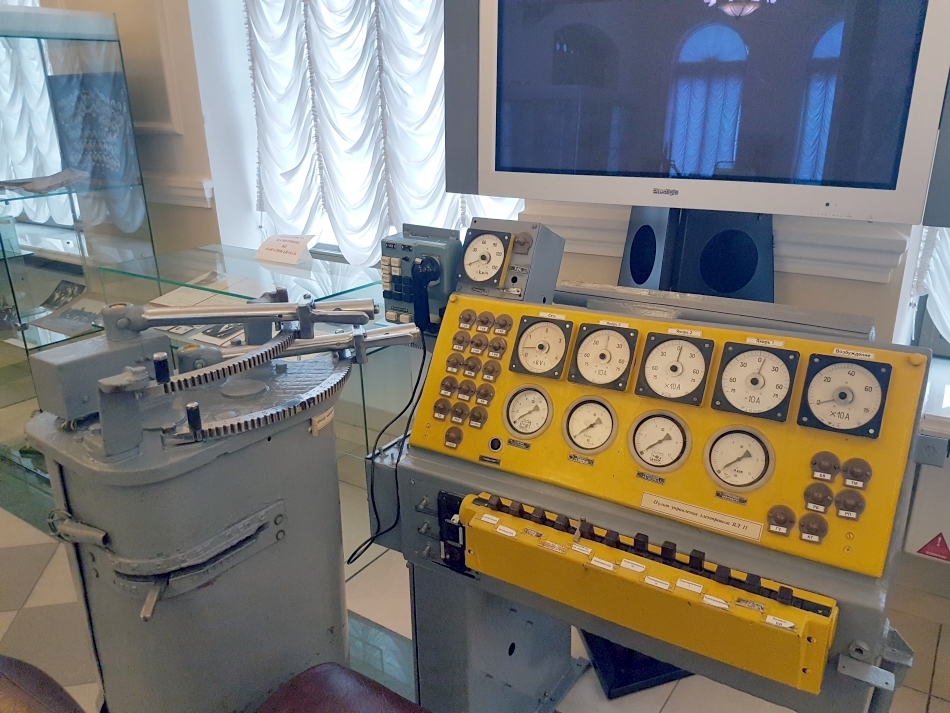
Communication equipment and management.
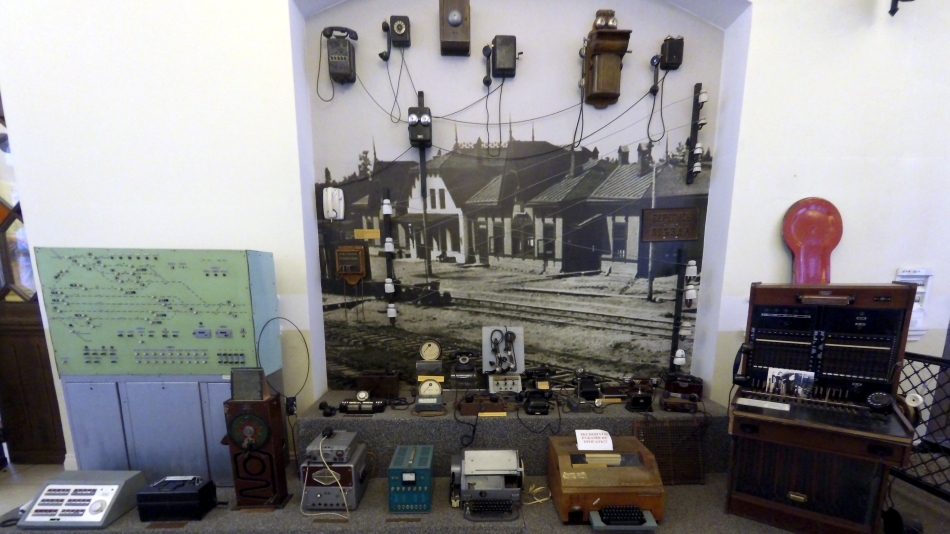
Large and good layouts. For some reason, railway museums love them.
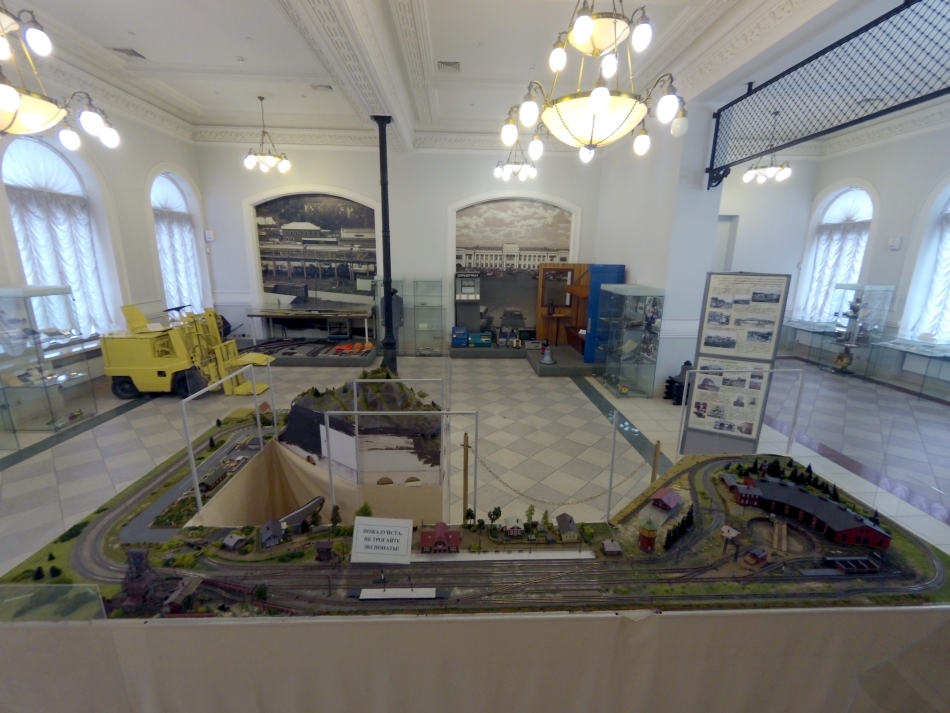
Close-up.
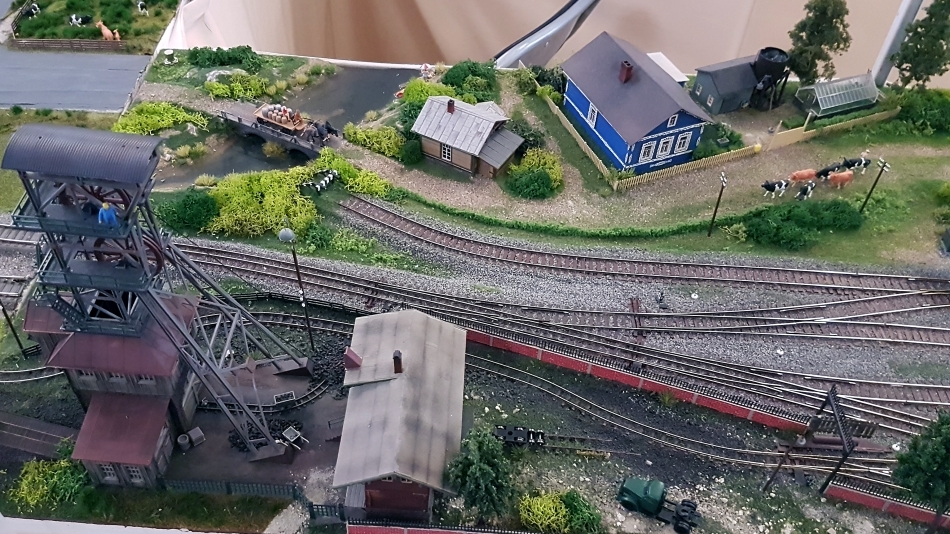
Bazhov Museum
After the geological museum, it was logical to go to someone who wrote very distinctively about gems, and the lives of the people who mined them. The Bazhov Museum is a small house in which he lived.
In the first room there is an excellent multimedia directory (left).

Personal items and gifts.




Museum of Science and Technology of the Sverdlovsk Railway
Located near the station, in front of him sculptural compositions.

Layout of the boiler locomotive "FD" in 1939.

Railway bike.

Below is a mechanical computer for calculating the magnitude of the shifts when straightening rail lines on curves. Top special abacus to determine the deflection of the rail.

The control panel of the locomotive VL-11.

Communication equipment and management.

Large and good layouts. For some reason, railway museums love them.

Close-up.

Bonus
Thanks to the organizers of the exhibition, I managed to get to the local branch of Radio Silver Rain. We talked nicely about the Progress accident, Ilona Mask, space superstitions, women in space and so on.
Thank you for inviting Dimitri Stalny from the Moscow Museum of Cosmonautics and the staff of the Forward in Space exhibition for the excellent organization of the lectures.
My previous adventures:
Moscow Museum of Cosmonautics , April 11-12.
The Sea of Clarity festival and Moscow space exhibitions , July 14-17.
Excursion to RSC Energia and more museums , September.
Source: https://habr.com/ru/post/372963/
All Articles